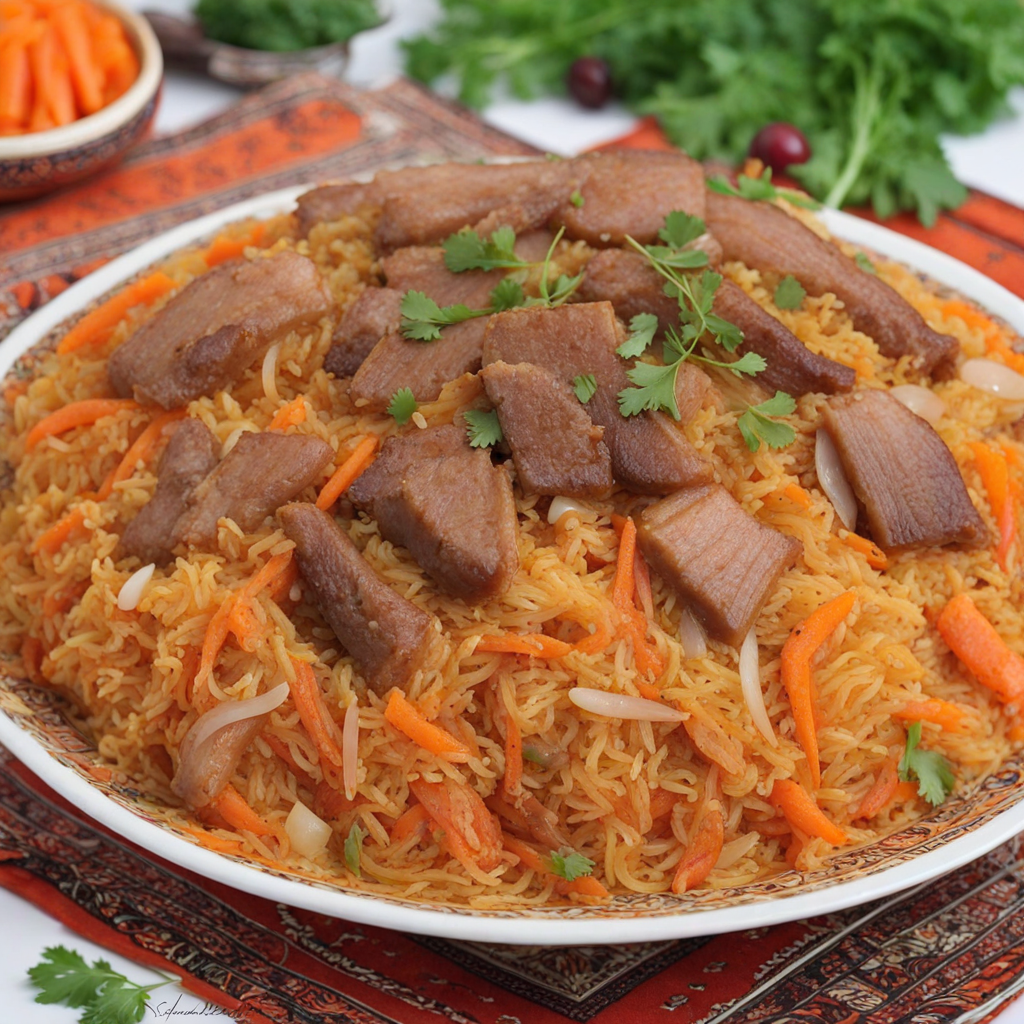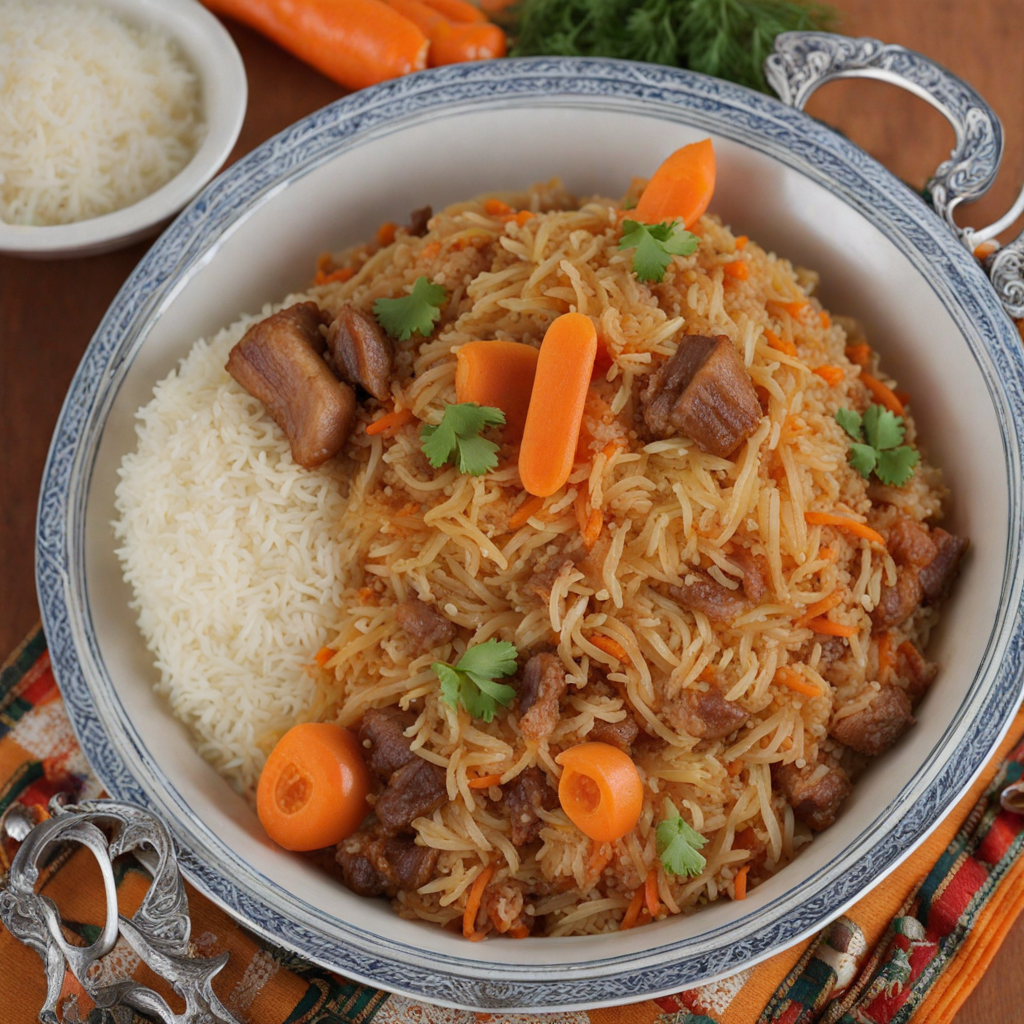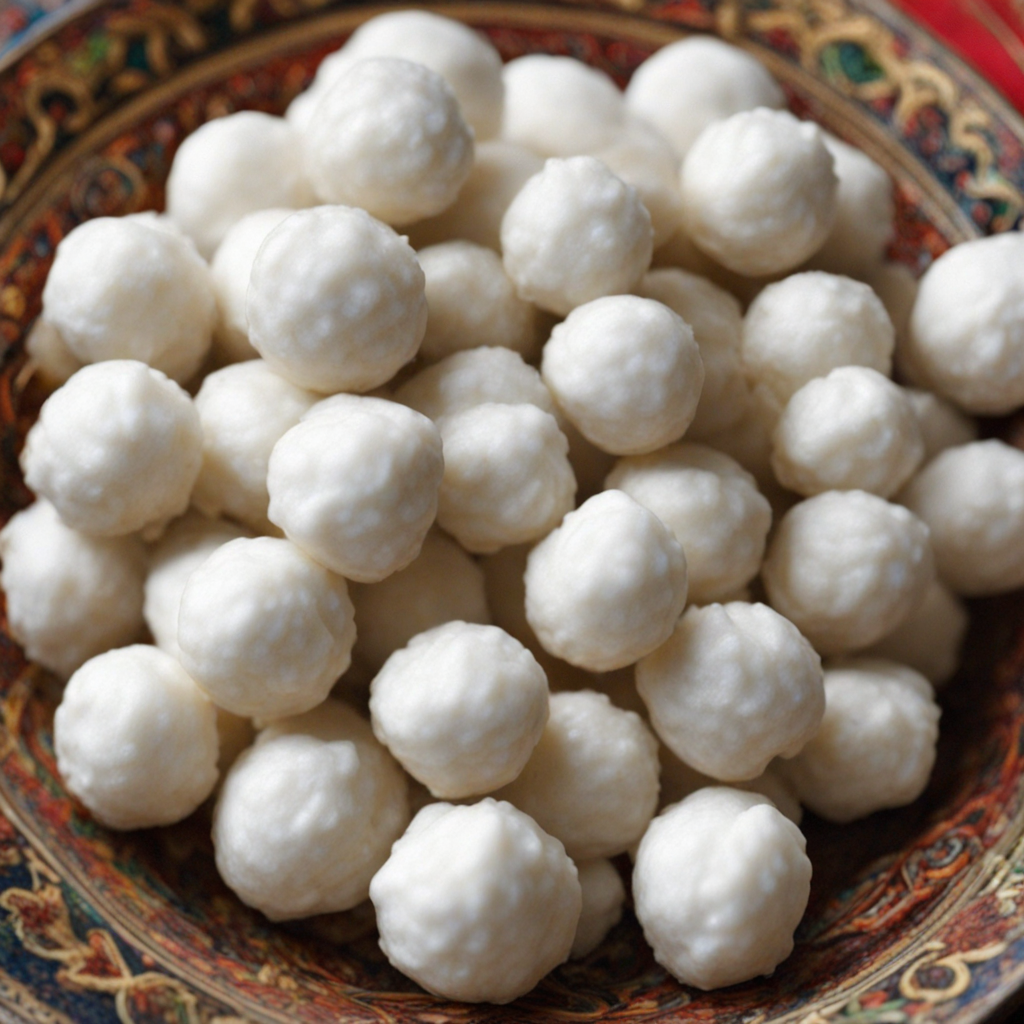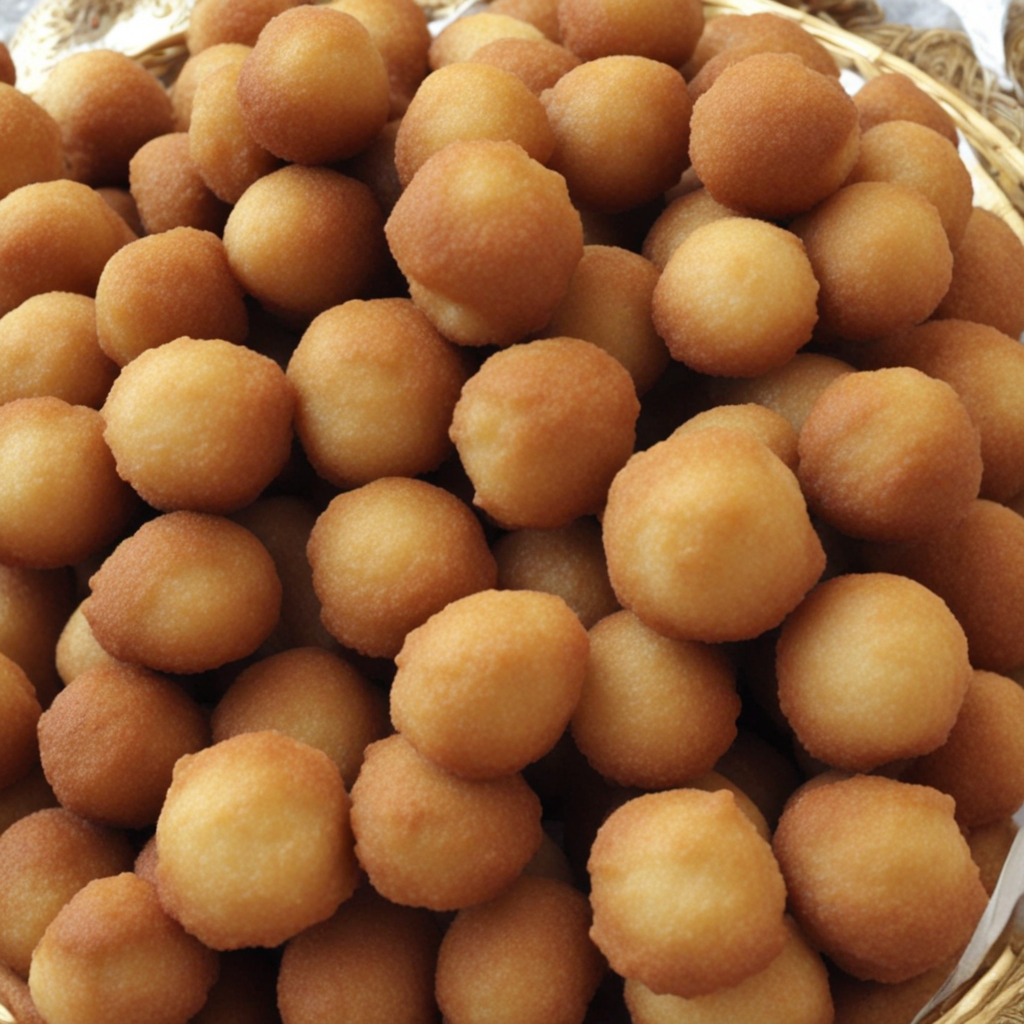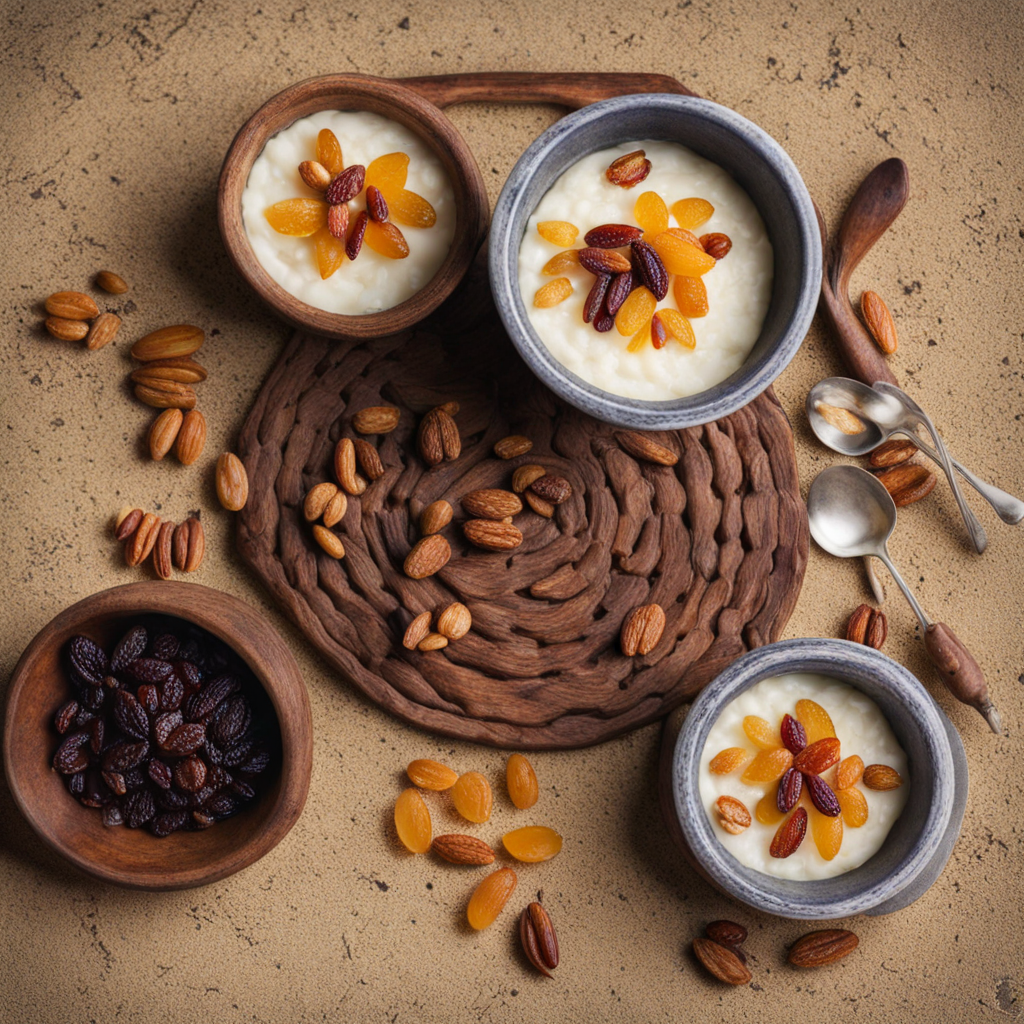Plov
Plov, a cherished dish from Tajikistan, is a vibrant and aromatic rice pilaf that showcases the rich culinary heritage of Central Asia. The foundation of plov is long-grain rice, traditionally cooked to fluffy perfection, often infused with saffron or turmeric to impart a warm golden hue. The dish is typically crowned with tender pieces of meat, usually lamb or beef, which have been slow-cooked to achieve a savory depth of flavor. Each region may have its own variation, but the essence remains the same: a hearty, comforting dish that brings people together around the table. Vegetables play a crucial role in plov, with onions, carrots, and sometimes garlic adding sweetness and texture to the mix. The carrots are often julienned and sautéed until caramelized, providing a sweet contrast to the savory meat. Nuts and dried fruits, such as raisins or apricots, may also be included for an extra layer of flavor and richness. The careful layering of ingredients and the meticulous cooking method highlight the skill and tradition passed down through generations in Tajik culture. Enjoying plov is more than just a meal; it's a communal experience. Traditionally served on a large platter, diners are encouraged to dig in together, using their hands to savor the dish in a shared celebration of flavor and friendship. The fragrant spices and hearty ingredients create a satisfying harmony that tantalizes the taste buds, making plov not only a staple of Tajik cuisine but also a beloved comfort food that embodies the spirit of hospitality and warmth.
How It Became This Dish
The Rich Tapestry of Plov: A Culinary Journey through Tajikistan #### Origins of Plov Plov, often recognized as the quintessential dish of Central Asia, holds a special place in the culinary traditions of Tajikistan. While variations of plov can be found across several countries in the region—including Uzbekistan, Kazakhstan, and Afghanistan—Tajik plov, or "палав," has its own unique characteristics and cultural significance. The origins of plov can be traced back to ancient Persia, where rice was first cultivated around 2000 BCE. As trade routes expanded, particularly along the Silk Road, the dish evolved and absorbed influences from various cultures. The name "plov" is derived from the Persian word "polow," which refers to rice cooked with meat and vegetables. Rice cultivation spread throughout Central Asia, and by the time the Tajiks embraced this dish, it had become a symbol of hospitality and social gatherings. Traditionally, plov is made with rice, meat (usually lamb or beef), carrots, onions, and a mix of spices. The cooking method involves layering the ingredients, allowing the flavors to meld together harmoniously. #### Cultural Significance In Tajik culture, plov is more than just a meal; it is a symbol of community, tradition, and celebration. The dish is often prepared during significant life events, such as weddings, birthdays, and religious holidays. For the Tajiks, serving plov to guests is a gesture of respect and hospitality. It is customary for the host to prepare a large pot of plov, which serves not only as the main course but also as a communal dish that brings people together. The preparation of plov is often accompanied by specific rituals. For instance, the cook, known as the "oshpaz," traditionally dons special attire and follows a meticulous process that has been passed down through generations. The act of cooking plov is considered an art form, where each ingredient is treated with reverence. The layering of rice and meat, the careful timing, and the choice of spices are all crucial elements that contribute to the final presentation and flavor of the dish. During major celebrations, such as Nowruz (the Persian New Year), plov takes center stage. It symbolizes abundance and renewal, aligning with the themes of spring and new beginnings. The dish is often accompanied by other traditional foods, such as "samosa" (fried pastries) and "chak-chak" (a sweet dessert), creating a festive atmosphere that highlights the importance of food in cultural identity. #### Development Over Time The evolution of plov in Tajikistan reflects broader historical and social changes in the region. The influence of the Soviet Union in the 20th century introduced new culinary practices and ingredients, altering traditional recipes. During this period, the accessibility of various food products expanded, leading to regional variations in plov. Although the classic recipe remained popular, ingredients such as chicken, vegetables, and even dried fruits began to appear more frequently in modern adaptations. Additionally, the globalization of cuisine has led to the emergence of fusion dishes that incorporate elements from other culinary traditions. For example, some contemporary chefs in Tajikistan experiment with international flavors, creating innovative versions of plov that appeal to younger generations. Yet, despite these changes, the core essence of plov as a communal dish rooted in tradition continues to thrive. In the post-Soviet era, there has been a resurgence of interest in traditional Tajik cuisine, with a renewed emphasis on preserving cultural heritage. Festivals and culinary competitions celebrate plov, showcasing its versatility and importance in Tajik society. As a result, plov has evolved into a cultural emblem that embodies national pride and identity. #### Regional Variations While Tajik plov shares similarities with its Central Asian counterparts, it possesses distinct features that set it apart. The Tajik version often includes a greater emphasis on vegetables, particularly carrots, which are cut into long julienne strips and add a natural sweetness to the dish. Additionally, the use of spices such as cumin, coriander, and black pepper enhances the flavor profile, giving Tajik plov a unique character. Another notable variant is "plov with raisins," where sweet dried fruits are added to the mix, creating a delightful contrast between savory and sweet. This combination not only highlights the agricultural bounty of the region but also reflects the Tajik appreciation for balancing flavors in their cuisine. #### The Role of Plov in Contemporary Society In modern Tajikistan, plov remains a beloved staple, often served in homes, restaurants, and social gatherings. It is not uncommon for families to have their own secret recipes, passed down through generations, each claiming to produce the best plov in the community. This personal connection to the dish reinforces its significance as a cultural touchstone, fostering a sense of belonging among Tajiks. Moreover, plov has gained international recognition as a symbol of Tajik hospitality and culinary excellence. As Tajik migrants settle in various parts of the world, they bring their culinary traditions with them, introducing plov to new audiences and expanding its reach beyond Central Asia. Food festivals and cultural events often feature plov as a highlight, allowing for cultural exchange and appreciation. #### Conclusion The journey of plov in Tajikistan is a testament to the resilience and adaptability of culinary traditions. From its ancient origins to its contemporary significance, plov embodies the spirit of Tajik culture, serving as a bridge between the past and present. As a dish that celebrates community and hospitality, plov continues to unite people, transcending borders and generations. In every bite of plov, there is a story—a story of tradition, flavor, and the enduring bonds of family and friendship. As Tajikistan continues to navigate the complexities of modern life, plov remains a cherished symbol of identity, reminding its people of their rich heritage and the importance of sharing meals together. Through its evolution, plov not only nourishes the body but also feeds the soul, making it a timeless culinary treasure in the heart of Tajikistan.
You may like
Discover local flavors from Tajikistan


